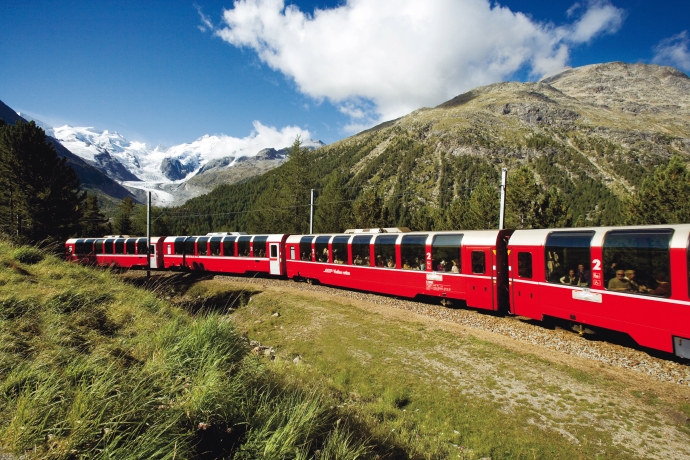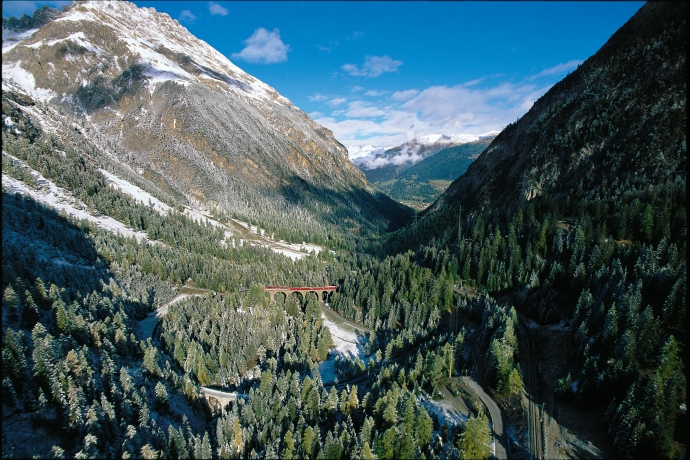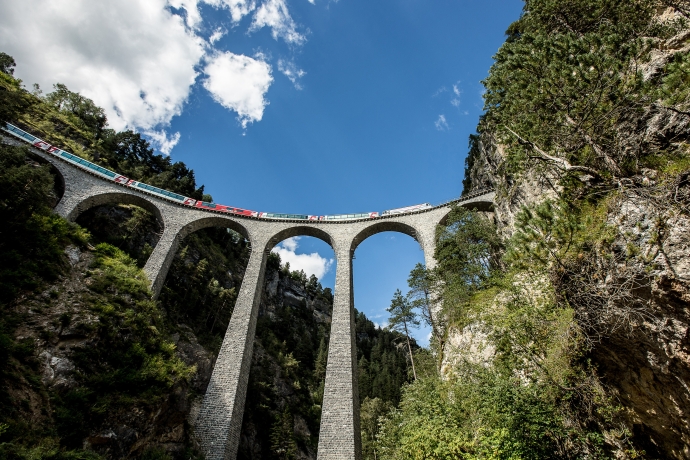UNESCO World Heritage Rhaetian Railway

The Albula line was completed in 1903, the Bernina line in 1910. The Albula Railway was already considered a masterpiece at the time of its construction. The Bernina line (St. Moritz - Tirano) became a model for many planned and some built intercity lines in the Alpine region. Today it is unique in the world: the route is the highest transalpine railway in Europe and one of the steepest adhesion railways in the world.
The surrounding landscape is also part of the exceptional importance of the Albula and Bernina line. On one hand, the direct connection to the railway construction is of unique quality, on the other hand, the line leads through an extremely rich cultural landscape. The railway's structures form a unit with its special topography. The choice of lines was mainly motivated by the mediation of tourist, i.e. scenic attractions. The factors of a cultural past and present overlap with an alpine to high alpine natural landscape of spectacular beauty.
Gallery




Show all 8 images
